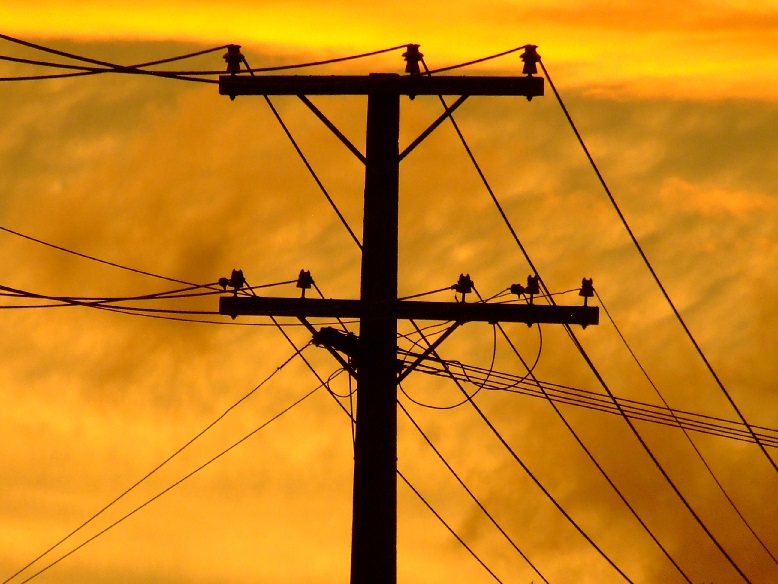The power systems are severely constrained in Johannesburg, which has a large appetite for electricity. As a result, Eskom has had to go into stage 2 load shedding in several areas in Johannesburg and other parts of South Africa.
“Eskom calls on consumers to urgently switch off geysers, air conditioners, pool pumps and all non-essential appliances throughout the day to reduce electricity demand. As workers leave office buildings this evening we ask that they please switch off the lights, with the exception of security lighting and avoid leaving on air-conditioning overnight.
Commercial customers, particularly shopping centres and office blocks, can make the biggest difference by switching off non-essential lights and not to leave office equipment such as photocopiers and computers in standby mode after hours.”
There are 3 stages of load shedding:
- Stage 1 – allows for up to 1000 MW of the national load to be shed.
- Stage 2 – allows for up to 2000 MW of the national load to be shed.
- Stage 3 – allows for up to 4000 MW of the national load to be shed.
As CEO Tshediso Matona explained, in stage one load shedding, they still supply 95% of the country. In stage two 90% of the country receives power. “Stage three, we are still supplying 86% of the country. A blackout is when you supply nothing, zero!”
Load shedding is an inconvenience on day to day life and can cause massive losses in business. This extreme shortage of power which we haven’t seen since 2008, begs the question how will Eskom overcome this and how do we live with load shedding?
Firstly they have tried to inform us in advance and to keep us updated with various methods.
- By publishing load shedding schedules
- By replying to phone inquiries, 0860 037 566. (Municipal customers are urged to contact their local authorities.)
- By posting load shedding and power outages on Twitter
This system does inform us when there is load shedding. However, it doesn’t prepare us for blackouts which occur due to unforeseen circumstances. These blackout periods negatively affect everyone and there is a serious need for fixing our national power grid.
Improving Eskom efficiency
Afribusiness proposes a 4-point plan to keep the lights on:
1st point – Deregulate the electricity supply industry and the electricity pricing mechanism.
This deregulation will allow market forces to set the price and determine the optimal demand and supply of electricity in South Africa.
2nd point – Privatise Eskom
Eskom is a public company and it has all the drawbacks that come with that status. Public companies tend to be more inefficient as they are not profit driven. There is less innovation and less worry about cost effective. Private companies have the benefit of being profit driven, which ensures optimal use of resources. The drawback of becoming a private company is that it nourishes inequality.
3rd point – Have private businesses manage the electricity distribution network on a concession basis.
Having private companies manage the electricity distribution will increase efficiency and reduce costs of using electricity in the long run.
4th point – Abandon demands regarding BEE and affirmative action, so that all individuals and communities, regardless of race, can make an equal effort to solve the problem.
This too moves away from inequality agendas and towards efficiency and optimal allocation of resources.
This 4 point plan aims to make Eskom more efficient and get it back on the right track. With electricity demand only growing as South Africa develops, there is a great need to satisfy electricity needs in order to help South Africa to grow and for life to continue as usual.
Even though there are several plans including this one to increase Eskom’s efficiency and output, these plans take time. So how do South Africans cope in the meantime and how can we decrease our electricity usage?
How to live with load shedding
Alternative entertainment
When load shedding occurs, that is the time to get off your computer, cellphone and tablet and start to interact with people, which may be a blessing in disguise.
Alternative energy
There has been a large increase in the demand for alternative energy sources so that South Africans on the whole can become less dependent on Eskom. Below are a few alternative energy solutions which could help make you more green and keep the lights on.
Solar power
Trying to shower when the geyser hasn’t had time to warm up is a hassle, although it does wake you up very quickly. Converting to a solar geyser saves you a large amount of electricity and provides a hot shower when you need it. For one person you generally need a 100 litre geyser. A family of four or five will need a 300-litre geyser.
Not only can solar power help with a good shower, it can also be used for security lights. The solar lights charge during the day and then lights all the needed areas at night for better security.
Wind power

If you live in a windy area, converting to wind generators might be a good idea. The size and output to power an entire household varies depending on zoning laws and the amount of power used. A standard home would require between 2 and 10KW output. However smaller wind generators could be used to power small items.
Fire power
When in doubt, turn to fire for cooking, heating and providing light. Swapping your electric stove with a gas stove allows you to cook when there is no power. Also, stoves are a large contributor to energy consumption..
Conclusion
As Eskom sets forth to become better, the year ahead seems dark. However, with some alternative solutions we can move forward and live with load shedding.










